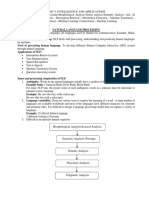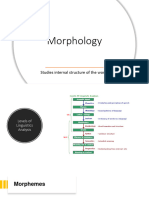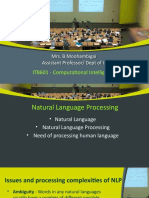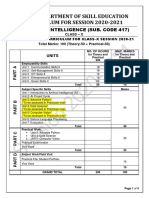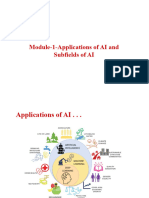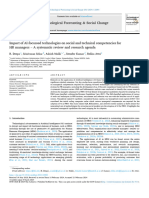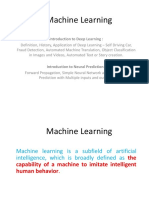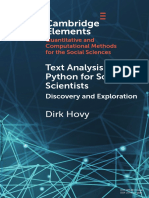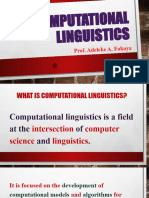0% found this document useful (0 votes)
33 views26 pagesNLP Notes
The document discusses the key components of natural language processing including finding the structure of words and documents. It covers morphological models, tokenization, lemmatization, parts of speech tagging, and classification algorithms for sentence and topic boundary detection.
Uploaded by
rusma1786Copyright
© © All Rights Reserved
We take content rights seriously. If you suspect this is your content, claim it here.
Available Formats
Download as DOCX, PDF, TXT or read online on Scribd
0% found this document useful (0 votes)
33 views26 pagesNLP Notes
The document discusses the key components of natural language processing including finding the structure of words and documents. It covers morphological models, tokenization, lemmatization, parts of speech tagging, and classification algorithms for sentence and topic boundary detection.
Uploaded by
rusma1786Copyright
© © All Rights Reserved
We take content rights seriously. If you suspect this is your content, claim it here.
Available Formats
Download as DOCX, PDF, TXT or read online on Scribd
/ 26







